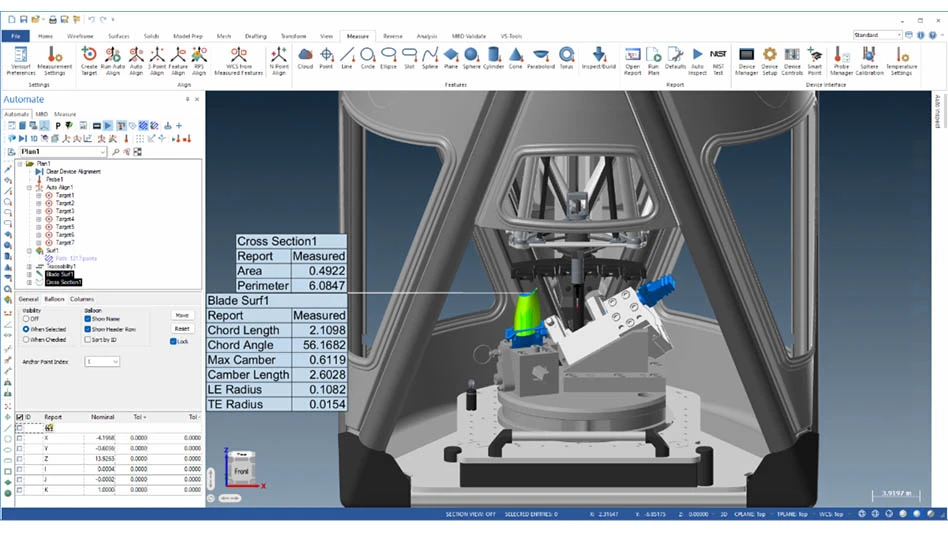 EDM has proven an ideal process for production of features on this component.Compared with other manufacturing sectors, aerospace has faired better than most over the past 18 months. Even so, all aeroengine manufacturers need to stay competitive and reduce costs, whether through the use of more fuel-efficient designs, lighter materials, or the use of newer, more flexible and faster component processing techniques.
EDM has proven an ideal process for production of features on this component.Compared with other manufacturing sectors, aerospace has faired better than most over the past 18 months. Even so, all aeroengine manufacturers need to stay competitive and reduce costs, whether through the use of more fuel-efficient designs, lighter materials, or the use of newer, more flexible and faster component processing techniques.
In relation to this latter aspect, new EDM technology appears to offer significant potential for future aeroengine manufacturing.
To date, EDM uptake by manufacturers such as Rolls-Royce and other leading companies worldwide, has been understandably cautious. In addition, it has centered primarily on the machining of cooling holes in turbine blades and seal grooves on nozzle guide vanes, which involve more traditional die sinking/drilling type systems.
Arguably, however, the most significant developments in EDM technology over the last 10 to 15 years have not been in this area, but with wire EDM as a consequence of improved generators, the use of coated wires, more efficient system control and monitoring capabilities, enhanced on-board machinability database systems, anti-electrolysis procedures, and improvements in reliability enabling realistic 24-hour operation.
Traditional wisdom suggests that EDM is a slower process, in comparison to more traditional machining techniques, and can leave the component at a significant disadvantage – in relation to workpiece integrity – due to recast layer formation, cracks, tensile residual stresses, and variation in microstructure and microhardness. With consequent effects on fatigue performance, the caution previously cited is understandable in an industry where passenger safety is paramount. Unfortunately, this 1960s/1970s understanding of EDM is still prevalent in many textbooks and to some extent is true, depending on the level of discharge energy and the way it is applied. Yet, with appropriate operating regimes, the resulting workpiece damage can be minimal. Furthermore, by using specialist electrodes and wires, an opportunity exists to modify the eroded surface to provide enhanced wear resistance, or further change the physical properties of the surface to meet other operating criteria.
The University of Birmingham’s Machining Research Group, within the School of Mechanical Engineering, is one of the key academic centers in Europe for machining research and teaching at the main UK facility for EDM development. Work on EDM technology at Birmingham has been on-going for about 40 years. The EDM facilities are amongst the best, with a state of the art Agie Vertex micro wire machine able to accommodate wires down to 20µm and an Agie Compact 1 diesink/ED milling unit. Both units are housed in a temperature controlled environment, together with a Charmilles Robofil 200 wire EDM and a newly installed Agie Charmilles Robofil 240CC Clean Cut machine. Currently, the focus of research on this unit is the cutting of Udimet 720 superalloy and Ti-6Al-2Sn-4Zr-6Mo titanium alloy for a joint UoB/Rolls-Royce/Agie-Charmilles research project on minimum damage machining. The aim of the work is to evaluate wire EDM as an alternative to broaching for the production of blade root slots in turbine and compressor discs.
Few cutting processes can provide the accuracy, re-entrant features, and workpiece quality/integrity necessary, however the acceptability of broaching comes at a price in terms of machine scale and cost, lengthy setting/validation and changeover times, and process inflexibility.
Central to the move to wire EDM is the need to ensure acceptable workpiece integrity, particularly fatigue performance. Whereas processes that remove material by continuous shearing/deformation can induce compressive residual stress in the machined surface, this is not the case with EDM which involves melting and evaporation without physical contact between the tool and workpiece. Ideally, EDM parts would have compressive residual stresses at the machined surface rather than tensile, however, for the present, the best that can be realistically engineered are neutral stresses.
From a surface roughness perspective there are few processes that can match the range possible with wire EDM and, in this respect, achieving the required standard of 0.8um Ra has proved relatively straightforward. With an average recast thickness of less than 10µm and no obvious thermal banding, the roughing cut in itself is impressive.
With fatigue testing currently in progress, it will be a little time yet before the call can be made as to whether wire EDM gets the green light for greater involvement in aero engine manufacturing. For the moment, the prospects look good and with new lines of research and development in hand to further enhance generator operation, the odds are definitely shortening.
Agie Charmille
Lincolnshire, IL
gfac.com/us

Explore the November December 2010 Issue
Check out more from this issue and find your next story to read.
Latest from Aerospace Manufacturing and Design
- Simplify your shop floor operations while ensuring quality parts
- Happy Independence Day - July 4th
- Bombardier receives firm order for 50 Challenger, Global jets
- Automatic miter bandsaw
- SAS orders 45 Embraer E2 jets with options for 10 more
- Height measuring instrument
- Shopfloor Connectivity Roundtable with Renishaw & SMW Autoblok
- Moog expands space actuation, avionics manufacturing





